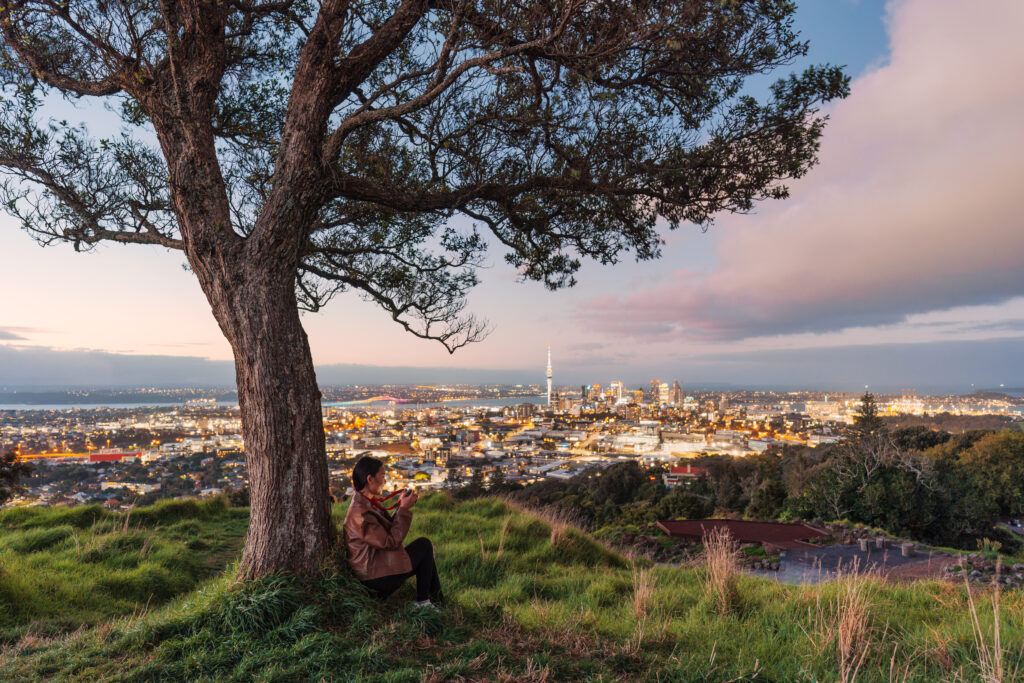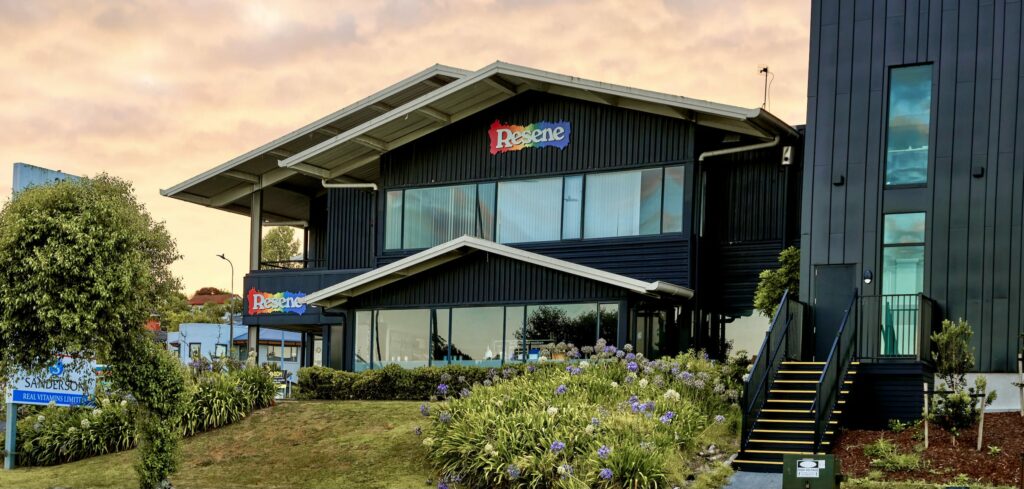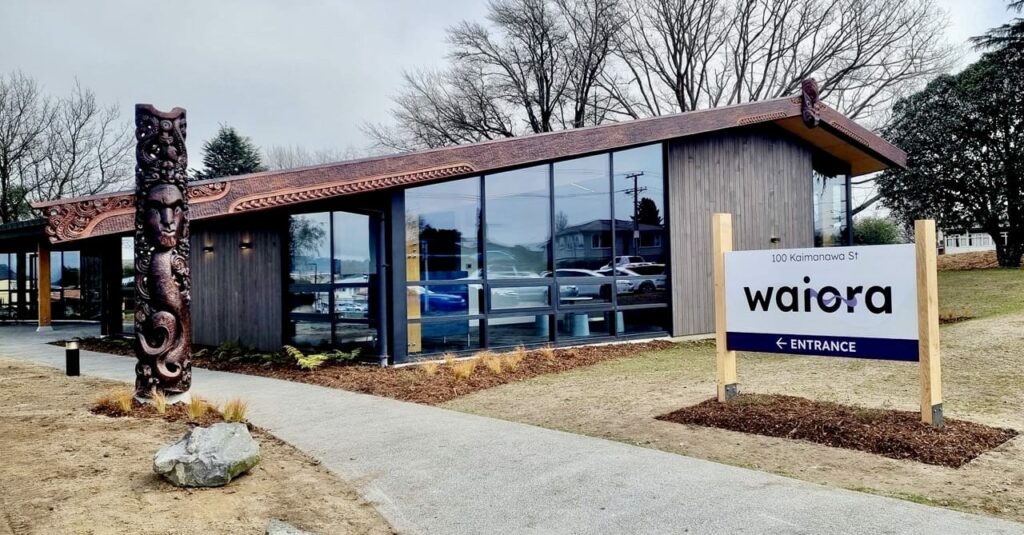Te Manawataki o Te Papa: A much-needed revitalisation project transforming Tauranga’s CBD into a vibrant cultural, social and economic hub. Join TwentyTwo’s David Lambie on the rollercoaster ride that started in 2016, as he shares the hurdles faced to stimulate this project into action. Discover the visionary architects, resilient team and innovative thinking behind the masterplan that will shape Tauranga’s civic precinct and bring significant change.
‘Te Manawataki o Te Papa’ – the heartbeat of Te Papa – is the name for the rejuvenation of the heart of Tauranga and one that suitably describes the essence and spirit of what the programme of works is seeking to achieve for the city.
A once-in-a-generation project, it will breathe new life into what will become a key cultural, community and social hub for the region, with wider economic benefits to the city over time – and all at TwentyTwo are proud to have played a key role in this.
The beginning: Taking a look back
The CBD has been in gradual decline for 15-plus years with a lack of investment, foot traffic and limited attraction – despite a growing regional population and thousands of people arriving by cruise ship in the area every summer. Few, if any local Tauranga residents or tourists have any reason to visit the CBD.
As the fastest-growing region in the country, there is a justifiable case for investing in the civic centre to give the city some status, facilities, attraction and a heart. The responsibility for instigating this has fallen on Tauranga City Council.
The focal point for Council has become its owned site in the centre of the Te Papa Peninsular – or CBD – which previously homed Council’s administration building and town hall over many decades. In 2014, black mould was discovered in the administration building which led to the immediate removal of Council staff and a further decline in activity in the area. This single event tipped all previous thinking about rejuvenating the city centre and prompted the initial ‘Heart of the City’ development/activation programme focused on this site.
At this point, Council commissioned architects Warren and Mahoney, Studio Pacific Architecture and LandLAB to generate a masterplan for the site. Instead of just replacing the Civic Administration building and enhancing the open spaces, they thought more broadly about what community facilities were required or would be seen in a modern progressive city. This adopted masterplan would see the site developed to include a new civic administration building and library/community centre, civic whare, a museum and open public-gathering spaces.
This is when TwentyTwo’s involvement began and we were tasked with developing the thinking around feasibility, funding, governance and delivery. We very quickly came to a few conclusions. We felt strongly that Council should not embark on this journey alone or by way of its typical delivery processes. It was clear that Council must go to market and find a development partner who has the potential to give a wider lens on the funding/design/delivery solution and bring much-needed expertise. We also noted that the funding solutions required innovation to reduce expose to the rate payer and therefore explored alternative methods for stimulating the programme of works.
The partnership
With Council agreeing a partner was required, an Expression of Interest (EOI) was issued to the market in 2017. Its purpose was to identify a suitably-experienced development partner who would collaborate with Council to deliver the projects over time.
It was an essential step in the process for multiple reasons. First, it acknowledged that Council needed a developer with experience in larger-scale development programmes – a skill set not necessarily found in the local construction/development market. Secondly, it acted as a procurement process to transparently and fairly test the market to identify the right partner while applying competitive tension. Thirdly, it was a test of the current Elected Members appetite to proceed, not just with a project of scale that involved investment, but also by way of a partnering model.
Following a detailed EOI/RFP process in 2018, developer Willis Bond was successful and entered into a negotiation phase with Council. As the Partnering Agreement made its way through Council for approval, there were signs of nervousness. Why this evolved after such a positive EOI and RFP stage was unclear but, in many respects, it spoke of an elected group that generally did nor embrace larger-scale commitment as a unified voice. Despite the rumblings, Council ultimately voted in favour of the Agreement 6/5 – hardly a resounding start to the project and was an early indication of the troubles to come – but, at the time, the Partnering Agreement itself was considered an innovative and effective tool for binding the parties. It contains a robust design and feasibility process, values-based principles, ‘buy local’ principles, off ramps for the parties and transparent pricing processes, to name a few.
Unfortunately, just as the project tried to gather momentum with Council’s new partner, we hit a number of obstacles. Title issues surfaced in respect to the main site (namely the Public Works Act and Reserves Act which created practical and cultural issues) and, perhaps most importantly, a far from perfect consultation process with local iwi, who continued to harbour reasonable and unresolved grievances in respect of the site. Coupled with a fast-dissolving Elected Member group, the project was temporarily stymied.
The independent commissioners
All aspects of the Heart of the City programme stopped for about 18 months until 2021 when the Minister of Local Government stepped in, removed the Elected Members and replaced them with four independent commissioners chaired by Anne Tolley.
This is a significant moment in the history of the project as the Commissioners were quick to realise that, not only was the revitalisation of the CBD a priority, but it must be Council-led and must happen immediately.
It is worthy to note that the Commission did not simply rubber stamp the Heart of the City plan uncontested. Rather, they forensically tested all aspects of it – the aspiration, the masterplan, the anticipated cost and the relationship with Willis Bond. At the conclusion of that assessment, the programme (now renamed ‘Te Manawataki o Te Papa’) was fully endorsed, with the Commissioners determining that it was absolutely the right thing to do. This determination resonated through the project team and reinvigorated the relationship with Willis Bond who rightly could have walked away prior to this governance change.
Perhaps the most significant aspect of the Commissioner’s instructions was not just the commitment to reactivate the CBD, but their equally-driven commitment to resolve all past grievances with local iwi in respect of the site. A consultation process began which concluded with co-ownership of the land being agreed and the relationship being reset. This relationship has continued to evolve as the project design team has worked alongside iwi to better understand the history of the site and incorporate that cultural narrative into the design.
Prompted into action, the Council project team and Willis Bond have launched wholeheartedly into the various design, pricing and programming processes. Concurrently, Council decided that instead of adopting a leasehold or PPP solution to fund the development, its preference was to pay for the facilities by way of 50% Council purse and 50% alternative funding avenues and have successfully promoted this through the annual plan.
The bigger picture: Council’s commitment
Further to Council’s commitment to Te Manawataki o Te Papa, Council is continuing to also take a proactive approach to publicly-led projects – the waterfront development, the Memorial Park aquatic centre, a potential conference centre, even potentially a stadium – all of which are designed to create an enduring and attractive city centre appropriate for the city size and community needs.
As Council has navigated the possibilities, we have observed how the private sector has responded to this proactive central city revitalisation thinking. Maybe it’s just timing, maybe it’s because the private sector can see potential. Either way, there has been a material uplift in development activity, either planned or real. This response has coincided with the Council communicating its intention and showing its proposed direction and investment.
Alongside the approved Te Manawataki o Te Papa project, Council has also triggered the development of a new Civic Administration building to replace the old mould-infested building. The Commissioners wisely decided to take the Civic Administration Building off the central Te Manawataki o Te Papa site and build it on an alternative Council-owned site 300 metres away on Devonport Road, leaving Te Manawataki o Te Papa centred on community facilities only.
The Civic Administration Building is an environmentally-sustainable building being delivered by Willis Bond that will bring Council staff currently scattered across Tauranga into one central location. While the building creates a central, effective and efficient workspace for Council staff, it also delivers 1,000 people to one location in the CBD and therefore stimulates and rejuvenates an area in rapid decline. The building is currently coming out of the ground with completion expected in early 2025.
So, as of today, after many years of planning and toil, Tauranga City Council has a variety of civic projects funded and approved to proceed – the most significant of these being Te Manawataki o Te Papa, which was approved on 24 July 2023. We are as convinced as Council is that the facilities and activities planned for the projects will draw people from near and far, will add vibrancy and breathe life into the Civic Centre.
Final thoughts
Finally, as we reflect on the journey to date and the role we have played supporting Council to achieve its aspirations for the city centre, we have two key thoughts.
First, the significance of the role played by the Commissioners and the Chief Executive Marty Grenfell. From our perspective, this Commission and its CE have acted with great integrity and real respect for the process of local government and its partnership with local iwi. They have showed true leadership and attended to every decision bought to them with equal measures of caution and action and applied measurable probity.
Secondly, is the importance of recognising the many Council staff who have worked tirelessly and with true determination to create a better outcome for Tauranga City over many years. Often, the community undervalues the talent and commitment of Council staff, not just in Tauranga, but across the country. From our close perspective, there is an abundance of talent working in local government and they should be celebrated.
TwentyTwo is very proud to have played its part in bringing these projects to life and now we continue to be involved with the delivery phases with our project and technology experience. We are truly committed to the projects and their reason for being and congratulate Council for its vision and bravery.



